Monterey Sucker
-
Scientific NameCatostomus occidentalis mnioltiltus
-
NativeYes
-
Identification
 Sacramento sucker, adult, caught in Putah Creek, California on 26 June 2008 by Teejay O'Rear. Photo by Amber Manfree.
Sacramento sucker, adult, caught in Putah Creek, California on 26 June 2008 by Teejay O'Rear. Photo by Amber Manfree.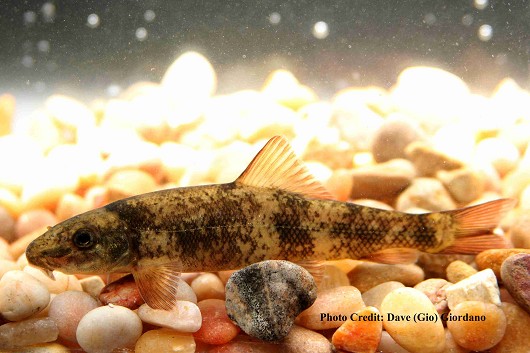 Sacramento sucker, juvenile, approximately 15 cm (6”) long. Location: Deer Creek, California (Yuba River basin). Date: 6/20/2007.
Sacramento sucker, juvenile, approximately 15 cm (6”) long. Location: Deer Creek, California (Yuba River basin). Date: 6/20/2007.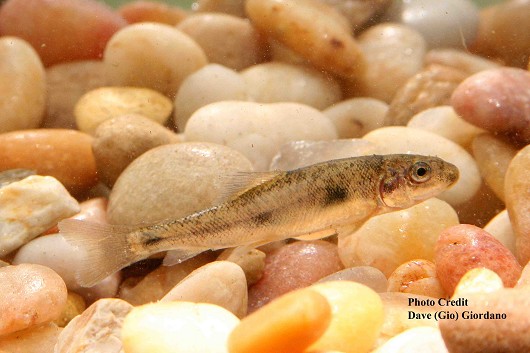 Sacramento sucker, young-of-the-year, approximately 5 cm (2”) long. Location: Deer Creek, California (Yuba River basin). Date: 6/22/2007.
Sacramento sucker, young-of-the-year, approximately 5 cm (2”) long. Location: Deer Creek, California (Yuba River basin). Date: 6/22/2007.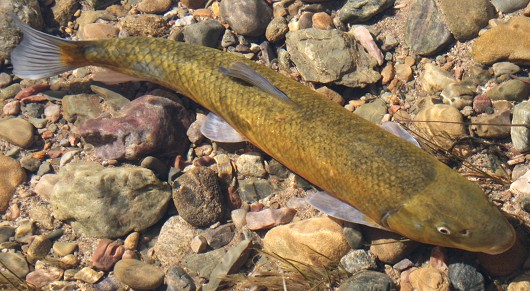 Sacramento sucker (sub-species, Pajaro sucker, Catostomus occidentalis mniotiltus) photographed in a tributary of the upper Salinas River on 11 March 2010, by Royce Larsen, UC Cooperative Extension.
Sacramento sucker (sub-species, Pajaro sucker, Catostomus occidentalis mniotiltus) photographed in a tributary of the upper Salinas River on 11 March 2010, by Royce Larsen, UC Cooperative Extension.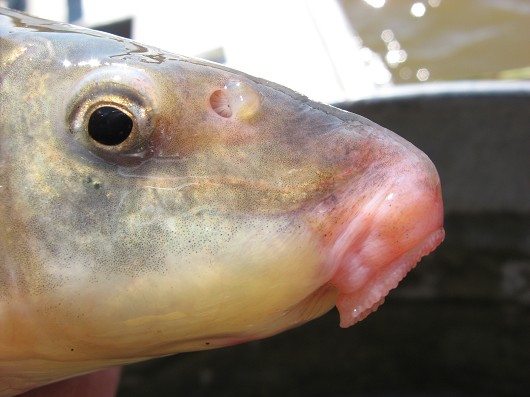 Sacramento sucker (head), caught in Suisun Marsh on 17 July 2008 by Teejay O'Rear. Photo by Amber Manfree.
Sacramento sucker (head), caught in Suisun Marsh on 17 July 2008 by Teejay O'Rear. Photo by Amber Manfree.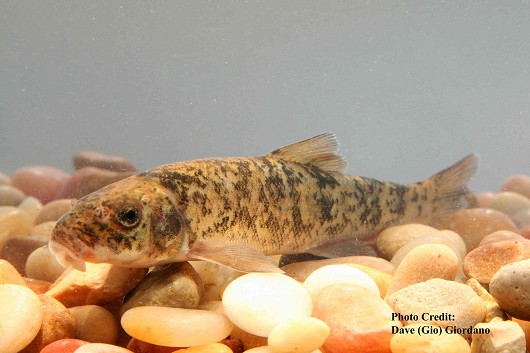 Sacramento sucker, juvenile, approximately 10 cm (4”) long. Location: Lassen Creek, Modoc County, California. Date: 7/10/2007.
Sacramento sucker, juvenile, approximately 10 cm (4”) long. Location: Lassen Creek, Modoc County, California. Date: 7/10/2007.PLEASE NOTE: The photos and information shown here are for the sub-species Sacramento Sucker. Both the Monterey Sucker and Sacramento Sucker are sub-species of Catostomus occidentalis.
- Sizes up to 56 cm FL
- Fleshy or “swollen” lips on sub terminal mouth
- Upper lip is covered in 4-6 rows of papillae, bottom lip symmetrically separated by deep indentation and lined with single row of papillae
- Dorsal fin longer than it is tall, positioned closer to tail than snout
- Green to brown back, yellow-gold to white underside
- Breeding fish develop red stripe on sides, both males and females may develop breeding tubercles.
- Juvenile suckers gray in color, slightly darker dorsal side
- Juvenile fish have 3-4 dark splotches on their body wall
- Lateral line scales: 56-75
- Fin rays: dorsal 11-15, anal 6-8
-
Life History
Sacramento Suckers are capable of thriving in diverse conditions within streams, lakes, and mild estuarine environments. Most Suckers are found in clear cool streams and in lakes at moderate elevations. Sacramento Suckers often share waters with Pikeminnow, Roach, and Hardhead. Young larvae typically begin their life in streams or lake tributaries by hiding and remaining in the gravel substrate. The post-larval and juvenile fish are often swept downstream in the current when they enter the main flow. Sacramento Suckers have a diet made up of mostly algae, invertebrates, and detritus. The larval Suckers feed on detritus and browse the bottom in warm protected streams, while juvenile fish forage along the bottom of stream banks of these warm streams. Young fish may stay in this warm water for several years before moving into lakes or larger rivers. Adult fish typically rest or hold in the deeper water during the day and feed during the first and last hours of the day. The larger fish may occupy pools, runs, or riffles in area where vegetation or rocks provide cover from birds and other predators. Their diet consists mostly of diatoms and detritus, with invertebrates playing a smaller role. The fish tend to grow larger and more rapidly in warmer streams and lakes as opposed to streams that are cool year round. At age 4-6 Sacramento Suckers become sexually mature and begin a spawning ritual that may involve a migration to a warmer and smaller stream. Spawning is triggered by the onset of warmer water temperatures and usually occurs between February and June. Suckers spawn in groups, sending fertilized eggs down into the substrate and out into the current. The eggs settle in gravel and slackwater areas, hatching after 2-4 weeks.
-
Links to Other ResearchN / A





